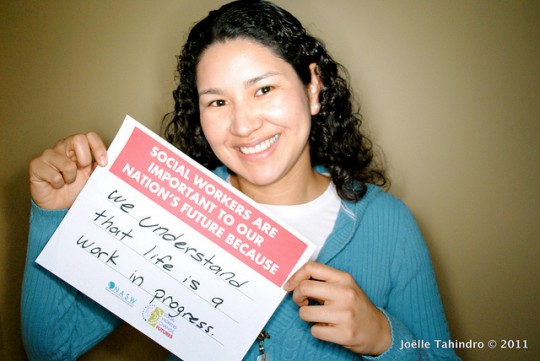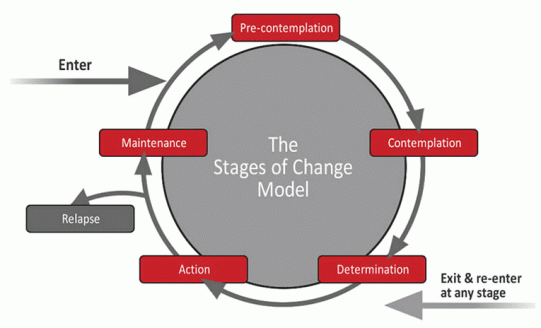
You can imagine I learned a lot about people and what makes them tick as a social work student interning in the juvenile court. I studied Counseling Psychology in graduate school (although funny enough, I have only taken social work jobs thus far) with an opportunity to counsel 13 to 17-year-old youth.
Time after time I would notice where they fell in the Prochaska and DiClemente’s Transtheoretical Model of Behavior Change. I would focus our session on unpacking the dynamics of being in that particular stage, hoping to move them along to the next stage.

Of particular interest and challenge to me was the hard, frustrating work of helping youth struggling with addiction to move into the Action phase.
Daryl, a sixteen-year-old boy comes to mind. With 11 days remaining in the detention facility before his trial, we talked about his potential charge: 1st-degree marijuana. He said to me, “Let them lock me up! See if I care!” Obviously he’s not at a place where he’s ready to do something about his drug problem.
Perhaps there’s a lesson in this for us as we consider how you can rally new supporters and move them to the Action phase, and then keep them for the long haul. Let’s go through the model and consider what it might look like for your supporters to be in each stage.
Pre-contemplation
In this stage, people are unaware of your organization and its mission. There’s no reason they would support you because they are uninformed. This would include a new target population or starting from scratch.
Contemplation
It may have been a conversation with a colleague, attending an event, or perusing your website for the first time. But for whatever reason, now their interest is piqued and they are considering supporting you.
You should ask yourself how you might market your nonprofit’s story to people who are weighing the pros and cons (of giving to your organization versus another organization; or even, if your website makes it easy to subscribe to updates). What might those pros and cons be?
Determination & Action
Here people are ready to give! They have weighed the pros and cons and decided you are worth supporting, and they want to follow through. These people have given financially or subscribed to receive updates/emails.
They’re all in.
In comparing these people to those in the Precontemplation stage, you would construct content praising them for their involvement while also drawing them closer and closer to your work with details rather than beginner information. This could be through a series of impact stories from your nonprofit or personal thank yous from the team.
Maintenance
The focus here is supporter retention. They’ve come a long way from unawareness to being involved and now you need to hold their attention. You can organize an annual event or create an online feedback survey to keep a pulse on their engagement.
Additionally, focusing on becoming increasingly creative with better graphics, content, and video is essential to retain supporters. As your organization grows, so should your online marketing strategy and level of creativity.
Relapse
This is when supporters drop out of the game. They have stopped giving and they aren’t opening their emails from you. This is a time of assessment and evaluation. Go back and see if there was a period of time when several people unsubscribed. Look for patterns and reasons for their decreased interest.
There may be demographic commonalities among those people who unsubscribed, or rather; maybe they got bored within specific months because the online content was dull. You could revisit the content published during that time to evaluate it. And of course, there can be extraneous factors as well.
We all develop new habits and lose some. We start diets and lose interest or motivation. We make New Year’s resolutions and after a few months, we Relapse and need to Contemplate why it’s important for us to reconsider moving toward our target goal again.
In the same way, people are people are people – even when it comes to them sticking with your organization for the long haul. Consider where your audience may be in the Stages of Change Model and you may find it helpful to breakdown your marketing strategy to cater to those different stages.




